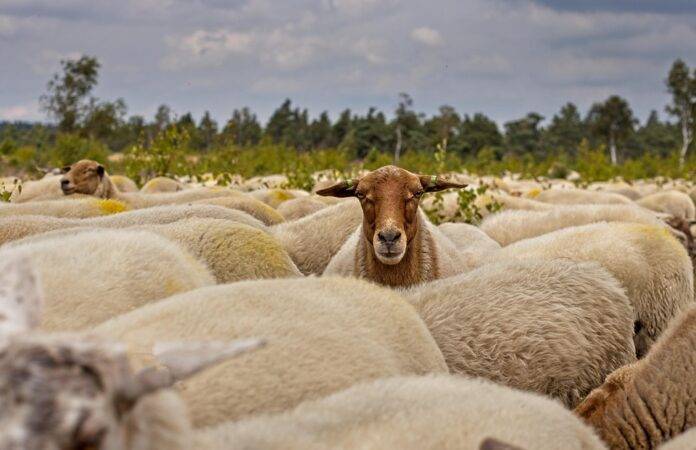Executive Summary
The Global Sheep Meat Brands Report 2025 provides an in-depth analysis of the sheep meat market, focusing on the trends, forecasts, and key factors influencing the industry. The report examines market dynamics, including demand and supply patterns, consumer preferences, and competitive landscape, along with detailed financials and volume data. With the global sheep meat market projected to grow significantly by 2025, this report aims to equip stakeholders with the necessary insights for strategic decision-making.
Market Overview
The global sheep meat market, also known as lamb and mutton market, encompasses the production, processing, and distribution of sheep meat products. According to the latest statistics, the global sheep meat market was valued at approximately USD 24 billion in 2020 and is expected to reach USD 30 billion by 2025, growing at a CAGR of around 5% during the forecast period. Major regions contributing to this growth include Asia-Pacific, Europe, and North America.
Market Segmentation
The sheep meat market can be segmented based on type, distribution channel, and region.
By Type
1. Lamb: Meat from young sheep, typically under one year old, which is more tender and milder in flavor.
2. Mutton: Meat from older sheep, which has a stronger flavor and is typically tougher than lamb.
In 2020, lamb accounted for approximately 70% of the total sheep meat market share, while mutton made up the remaining 30%.
By Distribution Channel
1. Online Retail: The growing trend of e-commerce has led to an increase in online sales of sheep meat products.
2. Offline Retail: Includes supermarkets, hypermarkets, and local butcher shops, which remain the dominant channel for sheep meat sales.
By Region
1. Asia-Pacific: The largest market for sheep meat, with countries like China and Australia leading in production and consumption.
2. Europe: A significant market, particularly in countries like the UK and France, which are known for their lamb dishes.
3. North America: A growing market, with the United States showing an increasing preference for lamb products.
Market Trends
Several trends are shaping the sheep meat market:
Health Consciousness
As consumers become more health-conscious, the demand for leaner meats, including sheep meat, has increased. Sheep meat is known for its higher omega-3 fatty acid content compared to other red meats, making it an attractive option for health-focused consumers.
Shift Towards Sustainable Practices
Sustainability has become a significant concern in the food industry. Many sheep meat brands are adopting sustainable farming practices, including improved grazing techniques and reduced carbon footprints, to appeal to environmentally conscious consumers.
Increased Global Trade
The globalization of the food supply chain has led to increased trade in sheep meat. Countries such as Australia and New Zealand are major exporters, supplying lamb and mutton to markets in Europe, Asia, and the Middle East.
Competitive Landscape
The sheep meat market is characterized by a mix of established and emerging brands. Key players include:
1. JBS S.A.
2. Australian Lamb Company
3. New Zealand Lamb Company
4. Tyson Foods, Inc.
5. Mountain States Rosen
These companies dominate the market by leveraging strong distribution networks, brand loyalty, and product innovation.
Financial Analysis of Key Players
1. JBS S.A.: Reported revenues of USD 51 billion in 2020, with the sheep meat segment contributing approximately 15% to the overall revenue.
2. Australian Lamb Company: Generated revenues of USD 1.5 billion in 2020, with a growth rate of 6% year-on-year.
3. New Zealand Lamb Company: Revenues reached USD 800 million in 2020, with exports accounting for 70% of sales.
Challenges Facing the Market
The sheep meat market faces several challenges that could impact growth:
Price Volatility
Fluctuations in feed costs and market demand can lead to price volatility, affecting profitability for producers and retailers. In 2021, the price of lamb increased by 15% due to rising feed costs, impacting consumer purchasing behavior.
Animal Welfare Concerns
Rising concerns regarding animal welfare have led to calls for improved practices in sheep farming. Companies that fail to address these concerns may face backlash from consumers and potential regulatory challenges.
Future Outlook
The global sheep meat market is poised for growth, with projections indicating it will reach USD 30 billion by 2025. Factors such as increasing health consciousness, demand for sustainable practices, and expansion in global trade will drive this growth.
Forecasts
– By 2025, the Asia-Pacific region is expected to account for over 40% of the global sheep meat market share.
– The online retail segment is projected to grow at a CAGR of 8% from 2021 to 2025.
– Lamb production is expected to increase by 10% as more consumers opt for healthier protein sources.
Conclusion
The Global Sheep Meat Brands Report 2025 offers valuable insights into the current state and future potential of the sheep meat market. With anticipated growth driven by health trends, sustainability, and increased trade, stakeholders must adapt to changing consumer preferences and market dynamics to capitalize on emerging opportunities. By leveraging data-driven strategies, the industry can navigate challenges and position itself for continued success in the evolving landscape.
[Read More: Global Sheep Industry Report 2025: Market Trends & Forecasts]




